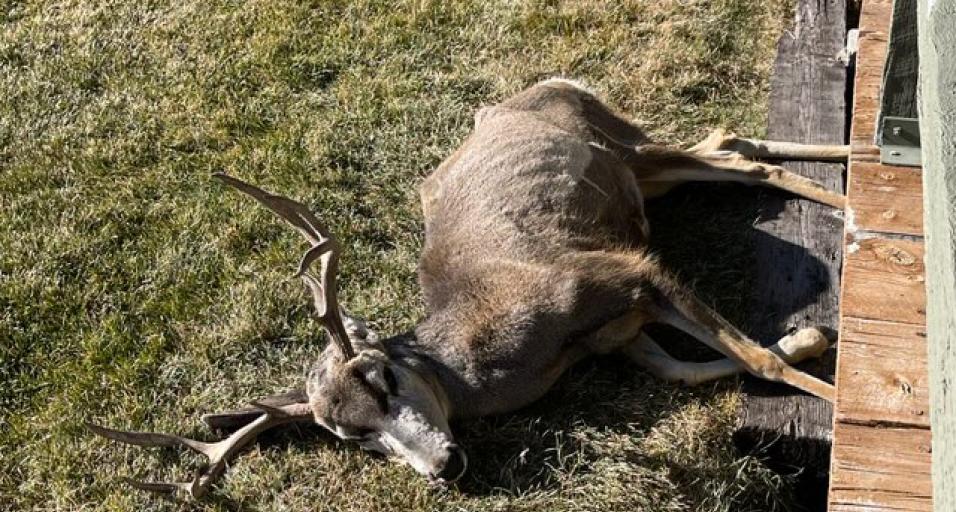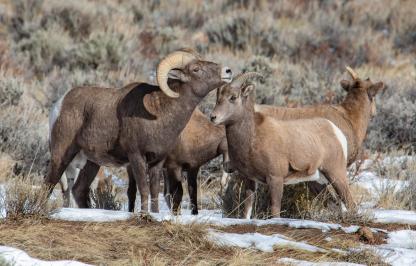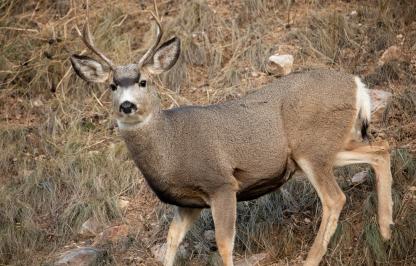The Wyoming Game and Fish Department first confirmed the presence of chronic wasting disease (CWD) in Wyoming’s Deer Hunt Area 154 near Bondurant this past September, from a hunter-harvested buck mule deer. A second CWD-positive buck mule deer was confirmed in this hunt area in late November 2023.
While wildlife managers weren’t particularly surprised by the finding, the second positive deer does emphasize the continued progression of CWD westward across the state. A quick look at the CWD map on the Game and Fish website shows that Area 154 is bordered by three other hunt areas that had previous CWD detections.
The fact that this buck mule deer was able to survive western Wyoming’s harsh winter of 2022-2023 only to succumb to CWD a few months later, is a stark reminder that winter isn’t the only challenge these animals face.
Since 1997, Wyoming Game and Fish has been monitoring the distribution and prevalence of CWD to better understand how this disease affects the health of Wyoming’s deer and elk populations. Evidence suggests that CWD is transmitted via saliva, urine, feces, or even infected carcasses. Animals may also be infected through the environment via contamination of feed or habitat with prions, which can persist for 10 or more years.
Still, CWD remains a vexing wildlife malady with a lot still to be learned. However, one thing that is known, is that congregating big game animals through supplemental feeding leads to increased disease transmission. This is a primary reason why the Wyoming Game and Fish Department does not endorse the supplemental feeding of deer. Artificial feeding can also disrupt a deer’s natural instinct to seasonally move across the landscape to take advantage of the highest quality forage available.
Elk have been supplementally fed in western Wyoming for over a century, and while an elk’s stomach can more easily adapt to being fed hay, there are still very real issues of increased disease that comes with congregating these animals. Feedground elk have always had a higher prevalence of brucellosis than their free-ranging counterparts, but that disease hasn’t been population-limiting.
Now, as CWD is spreading into feedground elk of western Wyoming, the always-fatal disease has the potential to have serious impacts. However, despite the very real disease issues associated with feeding elk, there are also benefits such as keeping brucellosis-infected elk away from cattle, limiting damage to landowners’ hay crops, and keeping elk from competing with struggling mule deer herds, all while maintaining robust elk numbers. Thus, the practice of feeding elk has become entrenched in western Wyoming’s wildlife management, not to mention Wyoming culture, and it is not easily undone.
This is why the Game and Fish Department has spent the past three years leading an elk feedgrounds public collaborative, working closely with public stakeholders to develop a long-term elk feedgrounds management plan as a guide forward in the face of the growing CWD issue. The long-term elk feedgrounds management plan, a culmination of this multi-year public collaborative effort, is planned to be brought before the Wyoming Game and Fish Commission at their March 2024 meeting in Pinedale.
Visit the Game and Fish website to learn more about the elk feedgrounds public collaborative, and the presence of CWD in Wyoming’s wildlife, including animal testing, transmission and regulations on transportation and disposal of carcasses. Continued monitoring of CWD over time is important to help Game and Fish understand the potential impacts of the disease and evaluate future management actions for deer and elk. The disease is 100% fatal to deer, elk and moose that have been infected.




